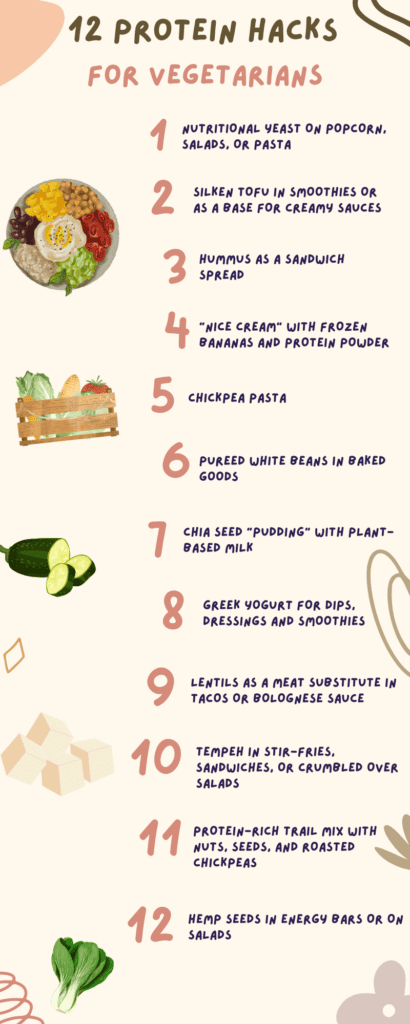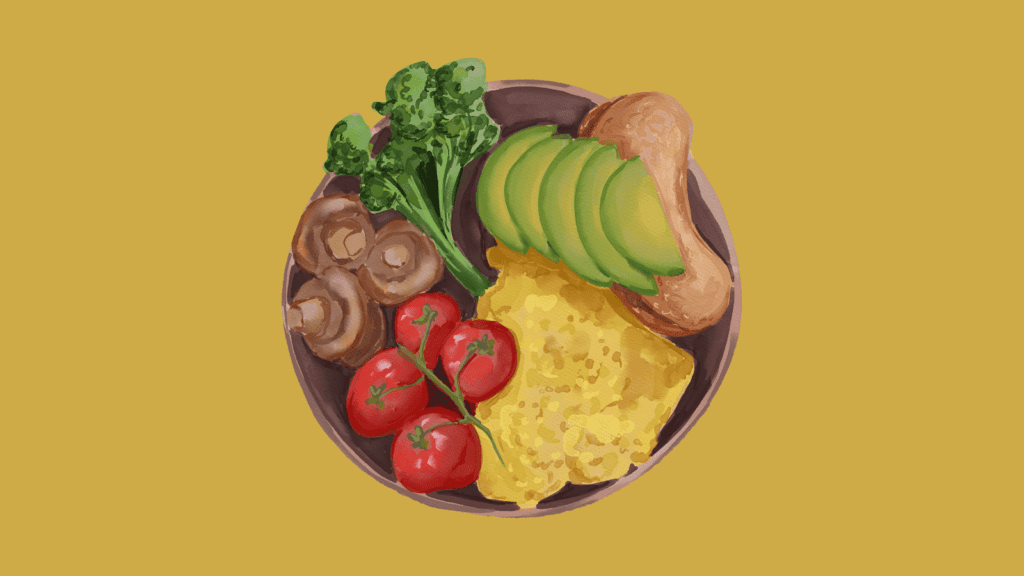What Steps Should Vegetarians Take to Ensure They Get Proper Levels of Protein?
You’ve gone vegetarian, and now everyone’s asking, “But where do you get your protein?”
If you want to optimize your health or build some serious muscle, here are some hacks and tips to get it done.

What Steps Should Vegetarians Take to Ensure They Get Proper Levels of Protein?
Vegetarians should eat a variety of foods in order to get all nine amino acids. Examples include eating dairy products, nuts, rice, and assorted beans.
12 Protein-Boosting Hacks for Vegetarians
- Sprinkle nutritional yeast on popcorn, salads, or pasta dishes for a cheesy flavor and protein boost.
- Blend silken tofu into smoothies or use it as a base for creamy sauces to add protein without altering taste.
- Make “nice cream” by blending frozen bananas with protein powder for a protein-rich dessert.
- Use hummus as a spread on sandwiches instead of mayonnaise for added protein and fiber.
- Swap regular pasta for legume-based pasta made from chickpeas, lentils, or edamame.
- Add pureed white beans to baked goods like muffins or brownies for a protein boost without affecting taste.
- Make a high-protein “pudding” by mixing chia seeds with plant-based milk and letting it sit overnight.
- Use Greek yogurt as a base for dips and dressings instead of sour cream.
- Incorporate hemp seeds into homemade energy bars or sprinkle them on salads for a complete protein source.
- Make a protein-rich trail mix with a variety of nuts, seeds, and roasted chickpeas.
- Use lentils as a meat substitute in tacos, bolognese sauce, or shepherd’s pie.
- Experiment with tempeh as a protein-rich alternative in stir-fries, sandwiches, or crumbled over salads.
7 Rules for Vegetarian Protein Mastery

1. Diversify Protein Sources
Mix it up with:
- Legumes (beans, lentils, chickpeas)
- Quinoa (the superhero of grains)
- Nuts and seeds
- Soy products (tofu, tempeh, edamame)
- Seitan (for the gluten-tolerant)
2. Spread Protein Throughout the Day
Don’t dump all your protein in one meal. Spread it throughout the day for better absorption and steady energy.
3. Hack Your Meals
Use some of the hacks from the list above to add extra protein to your meals
4. Listen to Your Body
Pay attention to how you feel, your energy levels, and overall health. Your body’s feedback is gold.
5. Consider Supplements (But Don’t Rely on Them)
Plant-based protein powders can be convenient, but they’re not necessary if you’re eating a good diet.
Related: Is your protein powder made from insect protein?
6. Fermented foods
Tempeh and natto make for a great protein + probiotic combo
Protein-Powered Meal Ideas

- Breakfast: Smoothie bowl with soy milk, spinach, banana, pea protein powder, topped with chia seeds and almonds.
- Lunch: Quinoa salad with roasted chickpeas, mixed greens, and tahini dressing.
- Dinner: Lentil and vegetable curry over brown rice.
- Snacks: Homemade energy balls with oats, nut butter, and plant-based protein powder.
Getting enough protein as a vegetarian is 100% doable. Focus on variety, spread your intake throughout the day, and get creative with your meals.
Remember, you don’t need to obsess over every gram. If you’re eating a diverse, whole-food diet, you’re probably nailing it. But if you’re concerned, consider tracking your intake for a few weeks or chat with a registered dietitian who knows their veggie stuff.


